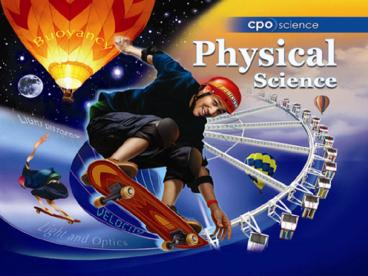Laws of Motion and Energy - PowerPoint PPT Presentation
1 / 20
Title:
Laws of Motion and Energy
Description:
Chapter Seven: Gravity and Space 7.1 Gravity 7.2 The Solar System 7.3 The Sun and the Stars Investigation 7B How big is the solar system? 7.3 Stars A star is ... – PowerPoint PPT presentation
Number of Views:221
Avg rating:3.0/5.0
Title: Laws of Motion and Energy
1
(No Transcript)
2
Laws of Motion and Energy
3
Chapter Seven Gravity and Space
- 7.1 Gravity
- 7.2 The Solar System
- 7.3 The Sun and the Stars
4
Investigation 7B
The Sizes of the Solar System
- How big is the solar system?
5
7.3 Stars
- A star is essentially an enormous, hot ball of
gas held together by gravity. - The density at the suns core is about 158.0
g/cm3.
This is about 18 times the density of solid
copper!
6
7.3 Why stars shine
- At high density and pressure, nuclear fusion
occurs, releasing tremendous amounts of energy. - Fusion reactions in the sun combine hydrogen to
make helium.
7
7.3 Anatomy of the sun
- The corona is the outermost layer of the suns
atmosphere, extending millions of kilometers
beyond the sun. - Sunspots are areas of gas that are cooler than
the gases around them.
8
(No Transcript)
9
7.3 Types of stars
- Stars come in a range of sizes and temperatures.
- Blue giant stars are hot and much more massive
than the sun. - Stars that are smaller than the sun come in two
main categories, dwarfs and neutron stars.
10
7.3 Distances to the nearest stars
- One light year is the distance that light travels
through space in one year. - A light year is a unit of distance, not time.
11
7.3 Temperature and color
- If you look closely at the stars on a clear
night, you might see a slight reddish or bluish
tint to some stars. - This is because stars surface temperatures are
different.
12
(No Transcript)
13
7.3 Temperature and color
- Red stars are cooler than white stars, and blue
stars are the hottest. - White light is a mixture of all colors at equal
brightness.
14
7.3 Galaxies
- A galaxy is a huge group of stars, dust, gas, and
other objects bound together by gravitational
forces. - The sun, along with an estimated 200 billion
other stars, belongs to the Milky Way galaxy.
15
7.3 Galaxies
- The disk of the Milky Way is a flattened,
rotating system that contains young to
middle-aged stars, along with gas and dust.
16
7.3 Distances between galaxies
- The distances between stars are 10,000 times
greater than the distances between planets. - The distances between galaxies are a million
times greater than the distances between stars.
17
7.3 Distances between galaxies
- Figuring out the distance between galaxies is one
of the more difficult tasks in astronomy. - A faint object in the night sky could be a dim
object that is relatively nearby or a bright
object that is far, far away.
18
7.3 Distances between galaxies
- The most reliable method for estimating the
distance to a galaxy is to find a star whose
luminosity is known. - If the luminosity is known, the inverse square
law can be used to find the distance from the
observed brightness.
19
Astronomy Connection
Extraterrestrial Volcanoes
- There are active volcanoes on Earth, but did you
know that a moon of Jupiter is considered the
most volcanically active place in the solar
system?
20
Activity
Sunspots
- Sunspots are large, dark regions that appear on
the surface of the Sun. - In this activity, you will determine the diameter
of the Sun and the number of sunspots on the Sun.































